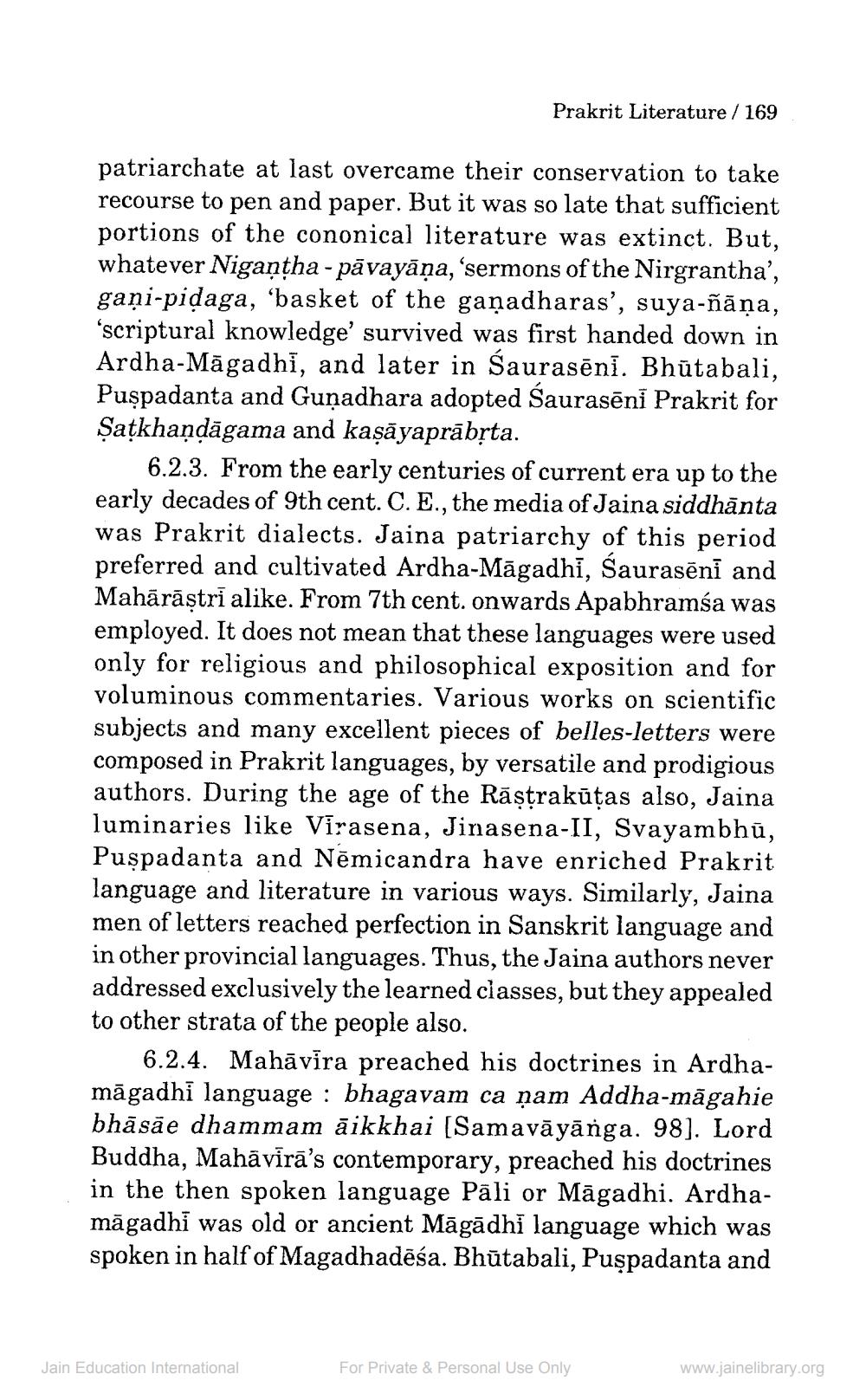________________
Prakrit Literature / 169
patriarchate at last overcame their conservation to take recourse to pen and paper. But it was so late that sufficient portions of the cononical literature was extinct. But, whatever Nigantha - pāvayāṇa, 'sermons of the Nirgrantha', gani-pidaga, 'basket of the gaṇadharas', suya-ñāṇa, 'scriptural knowledge' survived was first handed down in Ardha-Magadhi, and later in Saurasēni. Bhutabali, Puspadanta and Gunadhara adopted Saurasēni Prakrit for Satkhaṇḍāgama and kaṣāyaprābṛta.
6.2.3. From the early centuries of current era up to the early decades of 9th cent. C. E., the media of Jaina siddhanta was Prakrit dialects. Jaina patriarchy of this period preferred and cultivated Ardha-Magadhi, Śaurasēnī and Mahārāṣtri alike. From 7th cent. onwards Apabhramsa was employed. It does not mean that these languages were used only for religious and philosophical exposition and for voluminous commentaries. Various works on scientific subjects and many excellent pieces of belles-letters were composed in Prakrit languages, by versatile and prodigious authors. During the age of the Raṣṭrakūṭas also, Jaina luminaries like Virasena, Jinasena-II, Svayambhu, Puspadanta and Nemicandra have enriched Prakrit language and literature in various ways. Similarly, Jaina men of letters reached perfection in Sanskrit language and in other provincial languages. Thus, the Jaina authors never addressed exclusively the learned classes, but they appealed to other strata of the people also.
6.2.4. Mahāvira preached his doctrines in Ardhamāgadhi language: bhagavam ca nam Addha-magahie bhāsāe dhammam āikkhai [Samavāyānga. 98]. Lord Buddha, Mahavira's contemporary, preached his doctrines in the then spoken language Pāli or Magadhi. Ardhamagadhi was old or ancient Māgādhi language which was spoken in half of Magadhadeśa. Bhutabali, Puspadanta and
Jain Education International
For Private & Personal Use Only
www.jainelibrary.org




